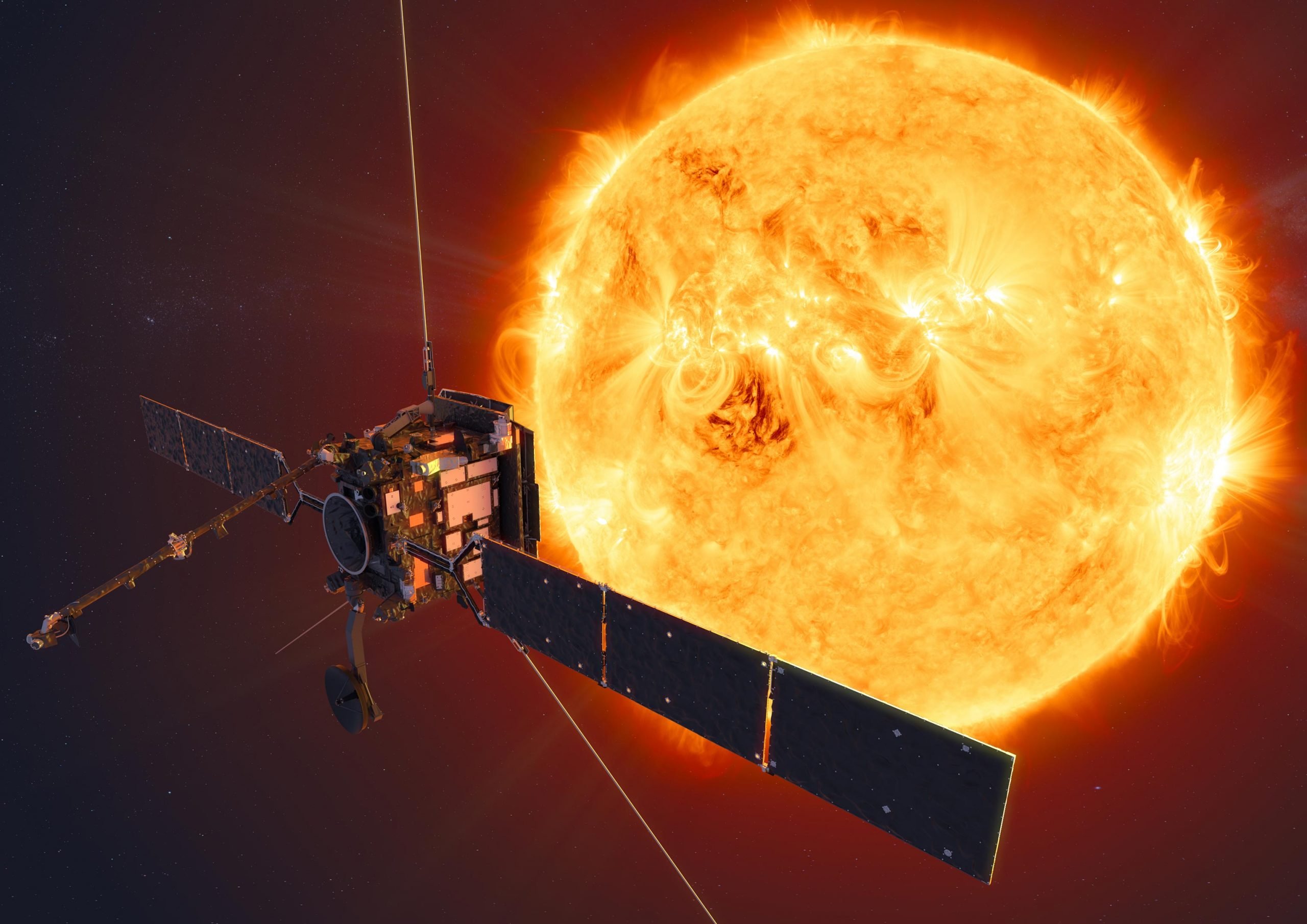Solar Orbiter’s mission is to study the Sun up close and from high latitudes, providing the first images of the Sun’s poles and investigating the heliosphere. Credit: ESA/ATG medialab
Stunning close-up views of the Sun reveal its dynamic magnetic structures and extreme temperatures, captured by ESA’s Solar Orbiter in collaboration with NASA’s Parker Solar Probe.
This otherworldly, ever-changing landscape (see video below) is what the Sun looks like up close. the European Space Agency’s Solar Orbiter filmed the transition from the Sun’s lower atmosphere to the much hotter outer corona. The hair-like structures are made of charged gas (plasma), following magnetic field lines emerging from the Sun’s interior.
The brightest regions are around one million degrees Celsius, while cooler material looks dark as it absorbs radiation.
This video was recorded on September 27, 2023, by the Extreme Ultraviolet Imager (EUI) instrument on Solar Orbiter. At the time, the spacecraft was at roughly a third of the Earth’s distance from the Sun, heading for a closest approach of 27 million miles (43 million km) on October 7, 2023.
On the same day that this video was recorded, NASA’s Parker Solar Probe skimmed just 4.51 million miles (7.26 million kilometers) from the solar surface. Rather than directly imaging the Sun, Parker measures particles and the magnetic field in the Sun’s corona and in the solar wind. This was a perfect opportunity for the two missions to team up, with ESA-led Solar Orbiter’s remote-sensing instruments observing the source region of the solar wind that would subsequently flow past Parker Solar Probe.
Spot the Moss, Spicules, Eruption, and Rain
Lower left corner: An intriguing feature visible throughout this movie is the bright gas that makes delicate, lace-like patterns across the Sun. This is called coronal ‘moss’. It usually appears around the base of large coronal loops that are too hot or too tenuous to be seen with the chosen instrument settings.
On the solar horizon: Spires of gas, known as spicules, reach up from the Sun’s chromosphere. These can reach up to a height of 10,000 km (6,200 miles).
Center around 0:22: A small eruption in the center of the field of view, with cooler material being lifted upwards before mostly falling back down. Don’t be fooled by the use of ‘small’ here: this eruption is bigger than Earth!
Center-left around 0:30: ‘Cool’ coronal rain (probably less than 10,000 °C / 18,000 °F) looks dark against the bright background of large coronal loops (around one million degrees Celsius). The rain is made of higher-density clumps of plasma that fall back towards the Sun under the influence of gravity.
This is the same video as above but without the annotations. Credit: ESA & NASA/Solar Orbiter/EUI Team

Dr. Sarah Adams is a scientist and science communicator who makes complex topics accessible to all. Her articles explore breakthroughs in various scientific disciplines, from space exploration to cutting-edge research.







